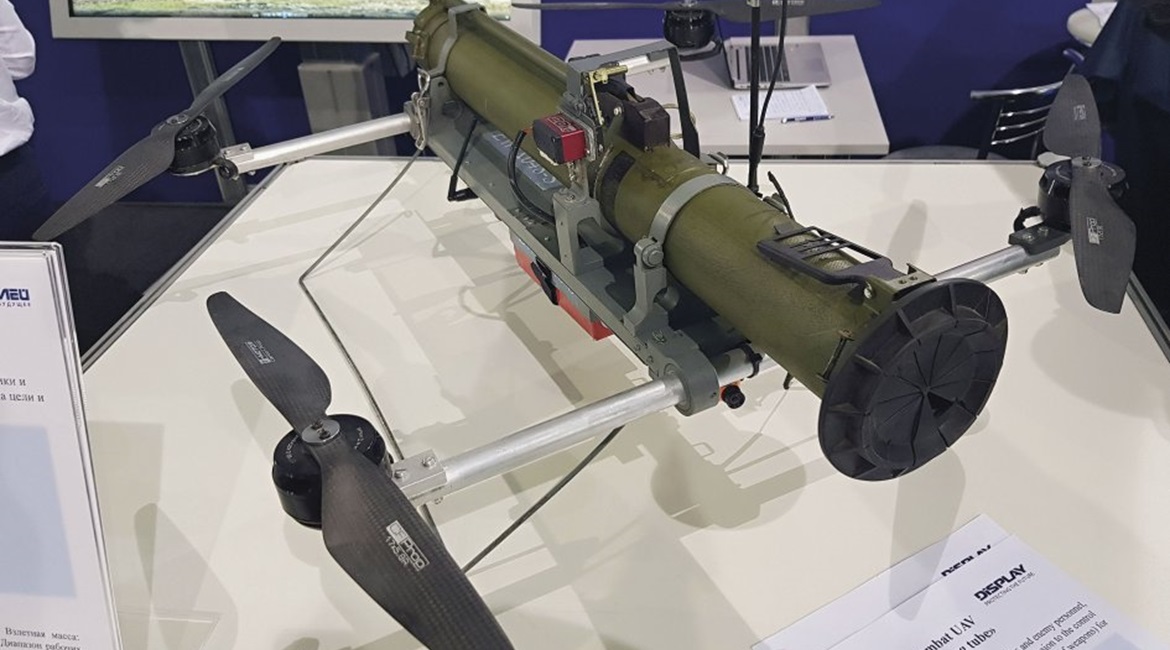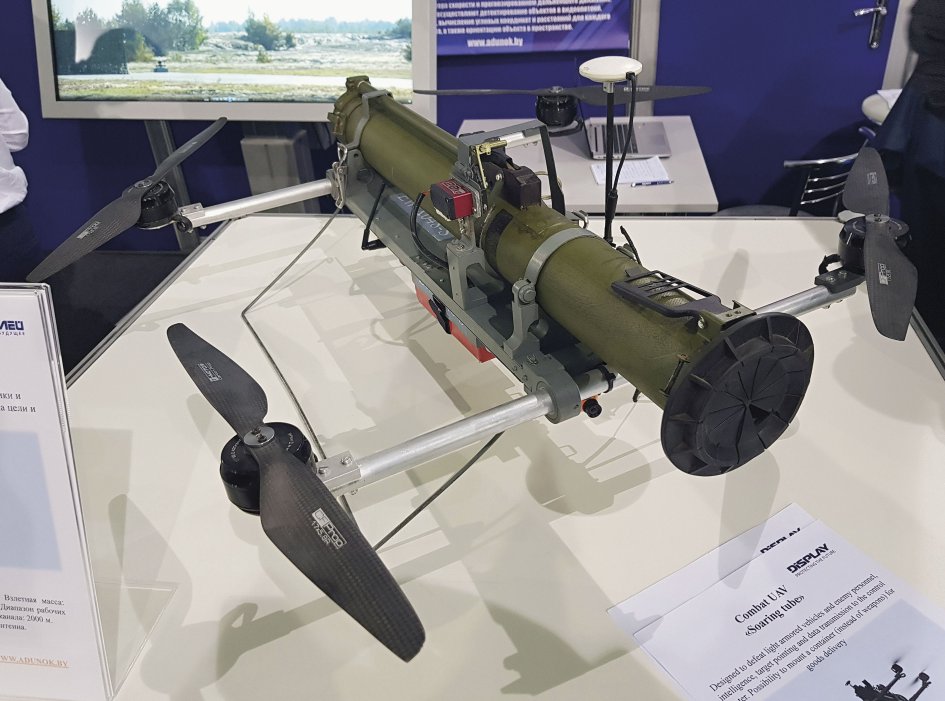
Belarusian companies have unveiled three new weaponised multicopter unmanned aircraft systems (UASs) being developed under a wider national effort to advance indigenous unmanned technologies.
The Vitebsk-based KB Display, which specialises in development and production of displays and remote-controlled weapons station (RCWS), has made its first foray into the UAS market with the indigenously developed Kvadro-1600 and Soaring Tube (Barrazhiruyuschaya Truba) multicopter UASs.

The Soaring Tube can be configured as a weaponised UAS as seen here, or used to carry stores. (Miroslav Gyűrösi)
The 30 kg Kvadro-1600 is an electrically powered octocopter that is designed to perform tactical reconnaissance, targeting, and data relay. However, it can also engage dismounted troops and light armoured vehicles with two rocket-propelled grenade (RPG)-26 launchers mounted on a gyrostabilised frame. According to KB Display, the UAS can operate for up to 25 minutes in temperatures between -20°C and 40°C and can transmit video imagery at distances of up to 6 km. Other payloads can include infrared (IR) cameras or directional antennas.
In contrast, the Soaring Tube is a 10 kg quadcopter with a flight endurance of 15 minutes and a video transmission range of 2 km. The air vehicle can be armed with a single RPG-26 launcher for anti-personnel or vehicle missions, although it can be used to carry stores.
Precision Electromechanics Plant (Zavod Tocsnoy Elektromekhaniki – ZTEM) has also developed the electrically powered 11 kg Grach octocopter UAS, which features a flight endurance of 20 minutes and a maximum speed of 65 km/h, as well as a control radius of up to 18 km.
The Kvadro-1600 armed multirotor UAS can carry a pair of stabilised RPG launchers. (Miroslav Gyűrösi)
Looking to read the full article?
Gain unlimited access to Janes news and more...




